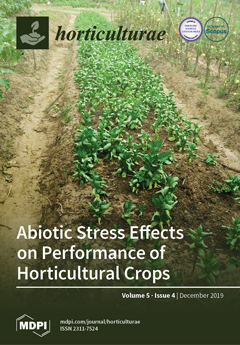Nineteen amides (three of them unpublished) were synthesized and tested on
Tuta absoluta Meyrick (Lepidoptera: Gelechiidae), an important pest of Solanaceae plants worldwide. Three of these compounds (
14,
15 and
16) presented high acute toxicity toward the pest, with LD
50
[...] Read more.
Nineteen amides (three of them unpublished) were synthesized and tested on
Tuta absoluta Meyrick (Lepidoptera: Gelechiidae), an important pest of Solanaceae plants worldwide. Three of these compounds (
14,
15 and
16) presented high acute toxicity toward the pest, with LD
50s of 3.68 (CI
95 = 2.83 − 4.47), 6.46 (CI
95 = 5.85 − 7.20), and 13.52 μg/mg (CI
95 = 11.06 − 15.95), respectively. Amide
14 presented the fastest action (LT
50 = 1.2 minutes, CI
95 = 1.03 − 1.37), followed by amide
16 (LT
50 = 18 minutes, CI
95 = 9.96 − 26.04), and amide
15 (LT
50 = 3.7 hours, CI
95 = 0.69 − 6.71). When applied at a sublethal dose, they did not affect weight gain and leaf consumption of the pest. Bioassays were also conducted using the ant
Solenopsis saevissima (Hymenoptera: Formicidae) and wasp
Polybia ignobilis (Hymenoptera: Vespidae) to assess the toxicity of the amides against
T. absoluta predators. Amides
14,
15, and
16 were harmless to
S. saevissima but presented high toxicity toward
P. ignobilis. Amides
14,
15 and
16 are potential hit compounds for the development of insecticides for
T. absoluta control. However, their use should be carried out following the principles of ecological selectivity to mitigate potential adverse effects on non-target organisms.
Full article





